Description
Nowadays institution that follow a successful line in work depends heavily on human capital. In addition to this, human capital is considered a valuable element that may grant benefits to an organization, although human capital alone will not add value to institution t without taking the decisions correctly (Jaafreh & Al-abedallat, 2013).
Moreover, The Human Resources (HR) of an institution offers the possibility of synergy for sustained competitive advantage, particularly, when it is properly deployed and applied. The traditional HR strategy, as well as the formal system for managing people in institution, is essentially concerned with transactional and administrative support services. In order to perform successfully, the roles of business partners and change agents under the HR strategy must be highly knowledgeable, multi-skilled, and be able to acquire core competencies like business knowledge, vision strategy, global operating skills, reliability and integrity, internal consulting skills, and many others (Inyang, 2010). Therefore, the human resources management practices affect organizational performance.
Whereas, Organizational performance concerning the ideas of effectiveness and efficiency. Because any institution require to produce the right things by adopting the fewest possible inputs, then just like institution guarantee powerful and strong organizational performance (Li, et al. 2006).
Commonly, the institution seeks to implement well in different areas: First, they attempt to perform well financially, which seek to accomplish the best return on their investment, further, they must add as much rate as possible in their production operation. Second, they seek to perform well in concepts of the market.in other words, the institution needs to accomplish as much market share as they can and they should be manufactured a product that is in demand and at a price that enables them to compete strongly on the market (Inyang, 2010).
Add to that, companies can manage human resources and foster organizational performance, by having imagined of HR practices working alongside other dimensions. According to Minbaeva (2005), these are:
- Career planning and HR planning, which includes creating venture teams with a balanced skill-mix, recruiting the right people, and voluntary team assignment.
- Performance appraisal, which includes the encouragement of risk-taking, demanding innovation, generating or adopting new tasks, peer evaluation, frequent evaluations, and auditing innovation processes.
- Reward systems, which includes freedom to do research, freedom to fail, freedom to form teams, freedom to run businesses, balancing pay and pride, noticeable pay raises dual career tracks, promoting from within, recognition and rewards, and balancing team and individual rewards.
- Training, which includes empowering people and continued education.
- Selection, which includes determining the type of employees to be selected, the skills and motivation of these employees, and the opportunities and incentives that these employees have to design new and better ways of doing their jobs.
As well as, the concept of organizational performance and human resources is linked to the concept of quality management, which is like other administrative concepts with different concepts and ideas according to the angle of view by this researcher or that, but this variation in the formality of concepts is almost identical in the content intended as it is centered around the goal pursued by the organization, which is The consumer through the interaction of all actors. Furthermore, each institution is unique so that two institutions cannot be considered to be similar even if they practice the same activity as in educational institutions, whether public or private, industrial or service, operating on a profit basis. Besides, each company represents a shared culture that is unique, separate and different from others. Thus, quality management is an important issue of a massive responsibility to the director on realization organizational performance by human resource practices (Brogowicz et al., 1990; Jaafreh & Al-abedallat, 2013).
1.2 BACKGROUND OF THE RESEARCH
This section will be outlined and justified the literature review for the research. This section will briefly examine human resource practices, organizational performance, and quality management.
1.2.1 Human Resource Practices
Human resource management can be outlined as “the strategic and rationalistic approach of an organisation’s most valued estate, which are the people working there, who individually and cooperatively contribute to the accomplishment of its objectives” (Marchington and Wilkinson, 2002).
As mentioned in Schuller (2000) HRM could be regarded as a set of integrated strategies with a political and philosophical support. Moreover, there is four types of considerable version of HRM: a particular set of expectations, a strategic thrust informing decisions about people management, the central involvement of line managers, and dependence at a group of levers to characterise the employee relations.
HRM practices include the informal methods used when managing individuals. Moreover, human resource agendas let HR practices to be perform according to plan (Haines and Lafleur, 2008). Further, the general aim of human resource management is to certify that the organisation is capable of achieving success through individuals. , HRM practices can be the essence of organisational abilities that let firms to learn and exploit new opportunities (Welbourne, 2008).
Marcos and Fernando (2011) pointed out that human resource management practices of any firm that pursue a quality-enhancement strategy are likely to have:
- A relatively fixed and explicit job description.
- High levels of employee participation in decisions relevant to the immediate work conditions and the job itself.
- A mix of individual and group criteria for performance appraisal that is mostly short-term and results oriented
- Relatively egalitarian treatment of employees and some guarantees of employment security.
- Extensive and continuous employee training and development.
These practices facilitate quality increase by serving to ensure highly creditable behaviour from persons who can recognize with the goals of the organisation and, when needful, be flexible and adaptable to new job assignments and technological changes. In another hand, Employees as human resources are considered one of the most important resources within an organisation, and are key to achieving a competitive advantage. However, it has been contended that managing human resources is more difficult than managing knowledge or capital. Organisations use HRM components to amend the behaviours, attitudes, and insights of employees in a way that improves its performance and desired results. In addition, what should be considered is that HRM strategy are not fixed; they change from one company to another (Tiwari and Saxena, 2012).
Performance is one of the most squabble concepts about which there has never been a convention among many investigator and theorists. Different parties in organization are extremely interested in their company or organization’s performance. Therefore, effective and efficient company performance results in huge benefits to all parties, regardless of their interest in corporate performance (Mutia and Nyambegera 2014).
Moreover, Organizations perform different activities to achieve their organizational objectives. It is these repeatable actions that applied operations for the organization to be effective that must be quantified in order to achieve the level of performance and for management to make aware of decisions on where, in the processes to start actions to accomplish performance. Thus, it can be alleged that there is a close relationship between the organizational objective and the idea of organizational performance (Jenatabadi, 2015).
On the other hand, the concept of performance appraisal has emerged during the past few years, and various methods have been developed to measure and evaluate performance in many organizations. In the west particularly, many theories have been developed and applied to evaluate organizational performance. The outcome of applying such theories and methods result in the organization performance and organizations overriding the performance of other companies (Soare and Balanescu 2012).
Organizational performance refers to organization’s capability to earn its objectives by applying resources in an efficient and effective manner (Samad et al., 2013).
Ahmed and Shafiq (2014) outlined organizational performance as the capability of the organization to accomplish its goals. Moreover, organizational performance has been usually focused on two areas of research stream fundamentally on economic perspective and the organizational perspective. The economic perspective affirm the value of external market factors just like the firms’ competitive business position and anything related to financial aspects. The organizational perspective depends on behavioral and sociological paradigms and their turn with the environment, which contain quality of services (such as employee satisfaction, culture and customer satisfaction), quality of product and competitiveness.
Quality management means, in its entirety, “a system that includes a set of integrated intellectual philosophies, statistical tools and administrative processes used to achieve the objectives, and raise the level of satisfaction of the client and the employee alike, through continuous improvement of the institution and with the active participation of all for the benefit of the company and the self-development of its employees, Improving the quality of life in society (Kingsley Graham et al., 2014).
As well as, what needs to be done is to build an institutional culture in which quality is generally the value directed at individual activities. This is achieved when management takes the necessary steps to improve the performance of managers, managers, and staff within the organization.
From other hand, quality management of education can be defined as the process of maximizing performance and seeking to influence elements that are difficult to control directly through standards and procedures, a set of axioms that must be applied in aspects related to development and procedures (De Grauwe, 2005).
Correspondingly, quality has received a great deal of this attention to the extent that some thinkers call this era the age of quality, as one of the cornerstones of the new model of educational management, which was born to cope with the enormous changes at all levels of economic, political, social, educational and technological especially, and try to adapt to them, Total quality and educational reform are seen as two sides of a single coin. It can be said that total quality is the real challenge that nations will face in the coming decades. This does not mean neglecting the other aspects which must be accompanied by speed the development of all fields (Ennew et al., 1993).
Moreover, quality of education is linked to the processes of learning and education, as well as to management, in order to link education to the needs of the masked, to make the meaningful educational change, to build and develop the creativity queen of learners. Learning occurs when interaction occurs between the learner and his environment. The learner may modify, and our role is to give the opportunity for interaction to occur learning, which means providing all the conditions and environment conducive to learning, which necessitates the development of standards for operations, including a specific system to ensure the quality of education (Vandamme et al., 1993).
Quality is an integral part of product characteristics, and learning is a product that must meet specific needs and requirements. Therefore, this product must have characteristics and characteristics that reflect its ability to achieve the objectives and requirements expected of the service recipients, which places great responsibilities on the institutions that provide this service to focus more on required skills.
An institutions success and competitiveness, in the long term, count on the existence of qualified managers inside it, which have abilities to hold Quality Management in the organization. Many benefits are gotten when institutions aggressively measure their treatment of Organizational Performance problems, develop and apply Human Resource Practices plans the problem of the study lies in the different role of HRM practices that followed HRM department, thus reflecting the level of efficiency and effectiveness of these resources and their contribution to the competitive advantage in different sectors (Obeidat et al., 2018). Hence, it is the main concern of the HRM department to explore all possible ways of creating and sustaining organizational performance and quality management within organizations (Abu-Mahfouz, 2019; Sabiu et al., 2019).
This study is so important for different sectors to choose appropriate HRM practices which help to organizational performance and quality management in the organization. As well as, the organizational performance in the Jordanian universities is low comparing with expected results. However, there is a need to increase research opportunities that can enrich the understanding of human resources practices and their relationship to organizational performance in Jordanian universities (Al-Nsour, 2012).
The problem of this research relates to the gap between the expected organizational performance and the actual organizational performance in the administrative departments of the Jordanian government universities. This gap can be bridged by quality management. Thus, this study comes to expand the effort in this area and achieve the most distinguished aim in this study, is there a link occurred the role of quality management in the relationship between human resource practices and organizational performance at Jordanian public universities were selected as part of the higher education sector in Jordan.
Since the success of educational institutions and increase their competitiveness depends on the existence of management excellence, successful and qualified within them, in addition to the ability to provide high quality and efficiency of educational services. Many benefits are gained when educational institutions measure vigorously to address organizational performance problems and apply human resource practice plans. The current research problem lies in the different role of human resources management practices of the Human Resources Management Section, reflecting the level of efficiency and effectiveness of these resources and their contribution to the advantage Competitiveness in the higher education sector. Thus, the main concern of HRM is to maintain organizational performance and quality management within educational institutions.
Therefore, this research aims to expand the effort in this field and achieve the most distinctive objective in this research to find out if there is a link between the role of quality management in the relationship between human resource practices and organizational performance in Jordanian public universities. From this the following main study questions are emerge:
The first main question: What is the relationship between human resource practices and organizational performance?
Therefore, the following research sub question will be investigated:
- What is the relationship between selection and recruitment and organizational performance?
- What is the relationship between training and development and organizational performance?
- What is the relationship between Rewards system and organizational performance?
- What is the relationship between Performance appraisal and organizational performance?
The second main question: What is the relationship between quality management and organizational performance with its dimensions?
Therefore, the following research sub question will be investigated:
- What is the relationship between quality management and financial dimension?
- What is the relationship between quality management and customer dimension?
- What is the relationship between quality management and internal operations dimension?
- What is the relationship between quality management and innovation and learning dimension?
The third main question: What is the role of the difference of quality management as a moderating variable have on the relationship between human resource practices and organizational performance?
The objectives of this study impact to investigate the relationship between human resource practices and organizational performance at (10) Jordanian public universities, to investigate the role of quality management as a moderating variable on the relationship between human resource practices and organizational performance . This study aimed to achieve the following objectives:
The first main objectives: To investigate the relationship between human resource practices and organizational performance at Jordanian public universities
This main objective will lead the researcher to the following sub-objectives:
- To investigate the in the relationship between recruitment and selection and organizational performance
- To investigate the relationship between training and development and organizational performance.
- To investigate the relationship between rewards system and organizational performance.
- To investigate the relationship between Performance appraisal and organizational performance.
The second main objective: To investigate the relationship between quality management and organizational performance with its dimensions
This main objective will lead the researcher to the following sub-objectives:
- To investigate the relationship between quality management and financial dimension.
- To investigate the relationship between quality management and customer dimension.
- To investigate the relationship between quality management and internal operations dimension
- To investigate the relationship between quality management and innovation and learning dimension
The third main objective: To investigate the differences role of quality management as a moderating variable on the relationship between human resource practices and organizational performance at Jordanian public universities.
1.7 HYPOTHESIS OF THE RESEARCH
The aim of the research is to explore the moderating role of quality management on the relationship between human resource practices and organizational performance at Jordanian public universities. Below shows the research hypothesis:
The first main hypotheses: There is no significant relationship between human resource practices with its dimensions and organizational performance with its combined dimensions
Therefore, the following research sub- hypotheses will be investigated:
- There is no significant relationship between recruitment and selection and organizational performance with its combined dimensions.
- There is no significant relationship between training and development and organizational performance with its combined dimensions
- There is no significant relationship between rewards system and organizational performance with its combined dimensions.
- There is no significant relationship between Performance appraisal and organizational performance with its combined dimensions.
The second main hypotheses: There is no significant relationship between quality management and organizational performance with its dimensions
Therefore, the following research sub- hypotheses will be investigated:
- There is no significant relationship between quality management and financial dimension.
- There is no significant relationship between quality management and customer dimension.
- There is no significant relationship between quality management and internal operations dimension
- There is no significant relationship between quality management and innovation and learning dimension
The third main hypotheses: There is no significant difference in the role of quality management as a moderating variable on the relationship between human resource
The following explains the variables in the theoretical framework model.
- Independentvariable:
Independent variable consists of HRM practices outlined as a framework that engage, improve, motivated, and keep employees to ensure the active implementation and the existence of the organization and its members (Tan, and Nasurdin, 2011).
HRM practices refers to the system that contain job studies connecting HRM practices with employee performance, analysis, orientation, performance appraisal , human resource management researchers and resource planning, labor relations, selection, recruitment, practitioners have increasingly exhausted the interest of compensation and training and development(Shaukat et al., 2015).
Thus the researcher define HRM practices such as framework that connecting HRM practices with human resource department to engage, improve, motivated, and keep employees at Jordanian public universities, so the higher management ensure the active implementation and the existence of the organization and its members.
On other hand, human resource will be assessed and evaluate through the four main dimensions
- Recruitment and Selection: The Recruitment According to Noe et al.,( 2008), It any activity carried on by organization with the primary purpose of identifying and attracting potential employees. and It can also be defined as Recruitment is defined as the process by which organizations locate and attractindividuals to fill job vacancies (Fisher et al., 1999). the Selection is the process of reducing the number and choosing from Applicants who have relevant qualifications (Bohlander and Snell, 2007).
To maximize competitive advantage a organization should choose the recruitment method that produces the best candidates efficiently and effectively (Kleiman, 2000), because Unless the right people are selected, the organization will fail to achieve its goals, and will consider several problems such as: low productivity, high absenteeism and employee stress, high turnover (Storey, 2007; Amin et al. ,2014).
- Training and development : Training refers to the tools and methods used to give new employee or present employees the knowledge behaviors, skills, and other abilities they need to perform their jobs (DeNisi and Griffin, 2001). its also contributes to the development of positive dispositions toward growth and change as enacted by individuals as well as groups and teams Training enhances employees’ capabilities which is instrumental in improving overall organizational performance (Millar and Stevens, 2012; Mackelprang et al., 2012; Paul, 2009).
- Rewards system: Reward systems are identified as one of (HRM) practices that may impact motivation. Reward systems may consist of many components, including financial and nonfinancial rewards, in fixed and variable amounts .expectancy, Reinforcement, and equity principles (Erede. 2015) , is defined by Taylor (2011) as “total reward involves designing a rich mix of complimentary initiatives which aim to maximize the chances that employees will find their work to be ‘rewarding’ in the widest sense of the word” (Taylor. 2011, p. 140)
- Performance evaluation: is a beneficial and necessary process, which provides annual feedback to staff members about career guidance and job effectiveness (Najafi,et. al, 2011).
- Moderator variables
Moderator variable consist of the Quality management refers to a system that includes a set of integrated intellectual philosophies, statistical tools and administrative processes used to achieve the objectives, and raise the level of satisfaction of the client and the employee alike, through continuous improvement of the institution and with the active participation of all for the benefit of the company and the self-development of its em ployees, Improving the quality of life in society (Kingsley Graham et al., 2014).
Quality management refers to a system that is manage technique that used to communicate to employees what is required to produce the desired quality of products and services and to influence employee actions to complete tasks according to the quality specifications(Terziovski et al., 1997).
Thus the researcher define Quality management as a system that is manage technique that used to communicate to employees at Jordanian public universities to achieve the objectives, and raise the level of satisfaction of the client and the employee alike, through continuous improvement of the institution and with the active participation of all for the benefit of the institution and the self-development of its employees, improving the quality of life in society.
- Dependent variable:
Dependent variable consists of the Organizational performance define as the capability of the organization to accomplish its goals. Moreover, organizational performance has been usually focused on two areas of research stream fundamentally on economic perspective and the organizational perspective (Ahmed and Shafiq, 2014).
Organizational performance refers to the term that arise between “to differentiate between management at the level of the individual and the corporation”. Moreover, the organizational performance requires that process are placed in line with the development of their environment, in order to let the development of the organization and its management system (Felizardo e al., 2017).
Thus the researcher define Organizational performance as capability of the organization to accomplish its goals to requires that process are placed in line with the development of their environment, in order to let the development of the institution of the higher education sector in Jordan at Jordanian public universities and its management system.
On other hand, organizational performance will be assessed and evaluate through the Balanced Scorecard model in four main dimensions (Kaplan and Norton, 2006):
- Financial dimension: This dimension tries to answer the question of how the enterprise appears, and it is used by many measures to measure such as: (financial flow, return on assets, and return on sales, growth rate).
- Customer Dimension: This dimension focuses on all activities and procedures that meet the needs of customers, where the speed of response to customers and meet their expectations are important to maintain a good relationship with them, and the measures used to measure this dimension (number of customers, the ratio of customers to employees, and satisfaction index Customers, complaints rate, new customer acquisition rate).
- Dimension of internal operations: This dimension measures the effectiveness of the internal systems of the organization in order to ensure its survival in competition, and this dimension contains many processes such as (operational processes, customer management processes, creative processes, organizational and social processes), and metrics used in it: (Product quality, delivery times, production cycle time, productivity, asset utilization).
- The innovation and learning Dimension: This dimension identifies the capabilities in which an organization grows in order to achieve high-level internal processes to attract customers and shareholders. This is done through developing and educating employees, producing an environment based on self-development, and providing opportunities for employees to develop, promote and maintain the most important metrics used in this dimension (R&D expenses, training expenses, and average hours of training per employee per year).
According to the significance of education sector in Jordan, quality management has become an important phenomenon in the field of management. A Quality Management leads an organization to both good and bad effects, it needs to be detected and monitored from an early stage. Thus, the aim of this research is to investigate the relationship between human resource practices and organizational performance in Jordanian public universities, investigate the differences role of quality management as a moderating variable on the relationship between human resource practices and organizational performance at Jordanian public universities.
1.11 SIGNIFICANCE OF THE RESEARCH
This research aims to investigate the relationship between human resource practices and organizational performance at ten Jordanian public universities which will be selected as part of the higher education sector in Jordan. Moreover to investigate the role of quality management as a moderating variable on the relationship between human resource practices and organizational performance. Thus, the importance of this research considered from the importance of the relationship between human resource practices and organizational performance. Besides, there are few studies, which investigate the quality management as a moderating variable on the kind of this relationship. As well as, this research will affect the range of studies in this field that can be conducted, which lead to some limitations and complications to the contents. However, this will be considered as a challenge from one side. From the other side, it contributes definitely by establishing an actual value in the academic research in human resource practices and organizational performance field, and encourage other researchers to build up and improve studies, which support this field in order to achieve the desired goals in future.
Over that, the result of the current research expects to provide convincing evidence about the direct effect of quality management on the relationship between human resource practices and organizational performance.
1.12 LIMITATIONS OF THE RESEARCH
According to the importance of this subject and the sample that will be used to research the moderate impact of quality management on the relationship between HR practices and organizational performance in the higher education sector in Jordan. The researcher expects to face some difficulties and constraints. These restrictions will essentially represent the nature of the subject, which can make them sensitive or close to psychological problems. This is because it deals with staff and managers in the education sector and the impact of management quality on the relationship between HR practices and organizational performance.
There are also other constraints that are expected to increase during the collection of data from the target sample. In addition, the questionnaires will be prepared to achieve research objectives. The sample of the research will be selected from the higher education sector in Jordan. This could have an impact on the ability of the questionnaire to cover all the issues related to the impact of administrative quality on the relationship between human resources practices and organizational performance. In the higher education sector in Jordan.

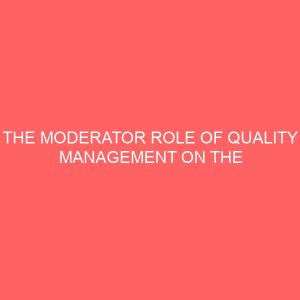
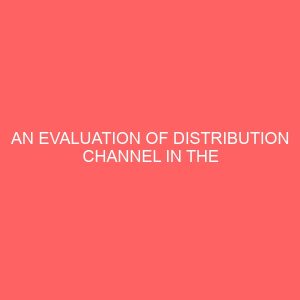


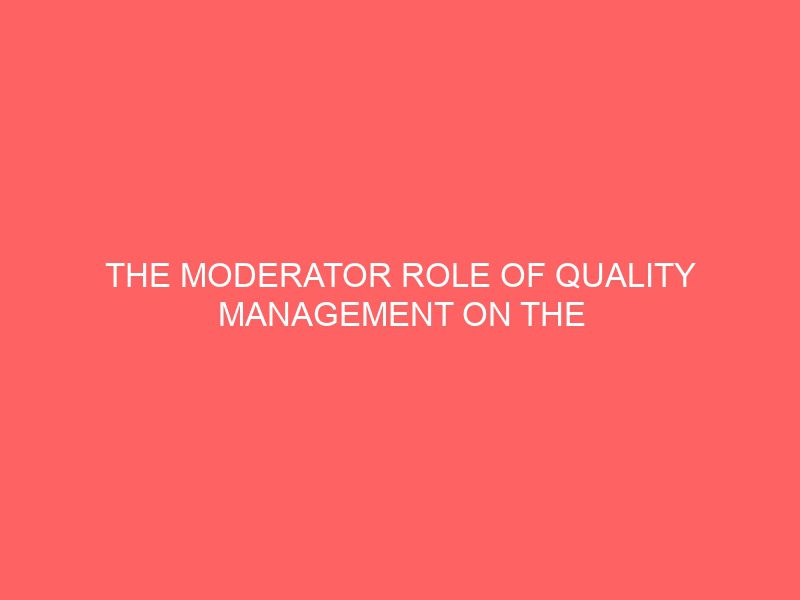
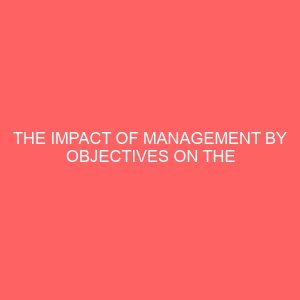
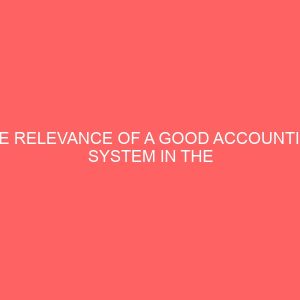
Reviews
There are no reviews yet.